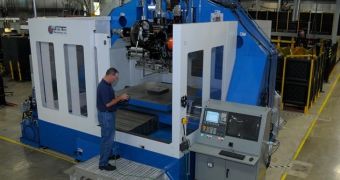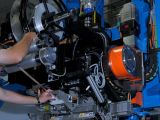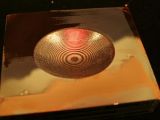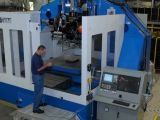Ultrasound is mostly used for scanning and certain forms of therapy, among other things, but the folks at Fabrisonic believe they can apply the principles of ultrasound to create advanced manufacturing capabilities.
Ultrasound is an oscillating sound pressure wave with a frequency greater than the upper limit of the human hearing range. This is the technical definition.
Humans have found many uses for these waves, however, regardless of our inability to perceive them naturally. In addition to what we've already touched upon, sonograms come to mind, a procedure that uses high-frequency sound waves to create an image of part of the inside of the body.
They are very common during pregnancies, allowing the parents to see the baby while still inside the womb. Also, it lets pediatricians make sure the baby is developing properly.
Fabrisonic believes they can use ultrasound for something much more proactive. Also, in something that has nothing to do with pregnancies, or anything living for that matter.
Long story short, they have developed a process known as Ultrasonic Additive Manufacturing (UAM), which allows electronic parts to be embedded into metal without damage.
Sensors aren't exactly long-lived, especially if you stick them inside machines and scanners meant to be used in less than favorable environments, like highly humid atmosphere, the extreme colds of the arctic, or the extreme heat of volcanoes. Corrosion, force, and normal usage take their toll on everything.
The idea of embedding, burying such sensors inside metal is an old one, but no means of doing such a thing has been discovered that does not require the metal to be superheated and, thus, rendered malleable.
The new method, UAM, uses waves of sound to merge layers of metal foil, creating full-density metallurgical bonds for a variety of metals. Combining the technology with other additive or subtractive processes can allow for complex forms, like honeycombed internal structures or hollow lattices.
For us common people, UAM is important because it allows sensors to be laminated into switch networks, expanding possible frequency bandwidths and ability to detect structural elements.
Already, the UAM technology has successfully integrated a number of sensors (thermocouples, strain sensors, accelerometers) into components. This greatly increases the time between device maintenance or replacement.
On a related note, UAM can even be used to merge together sheets of “sensor” plastic strips with, say, solid aluminum. Smart materials have integrated mechanical and electronic structures already (actuators are attached to the structure). UAM allows for smart materials and normal ones to be combined, significantly increasing endurance. This is especially useful if you integrate a shape memory alloy, as it reduces the strain of expansion and contraction caused by extreme heat and cold.
The first applications you're likely to see are tamperproof, ultra-rugged enclosures, non-destructive, fully-encapsulating fiber embedding, complex internal geometries, objects with fully-enclosed, sealed internal cavities, rapid prototyping of components.

 14 DAY TRIAL //
14 DAY TRIAL // 


